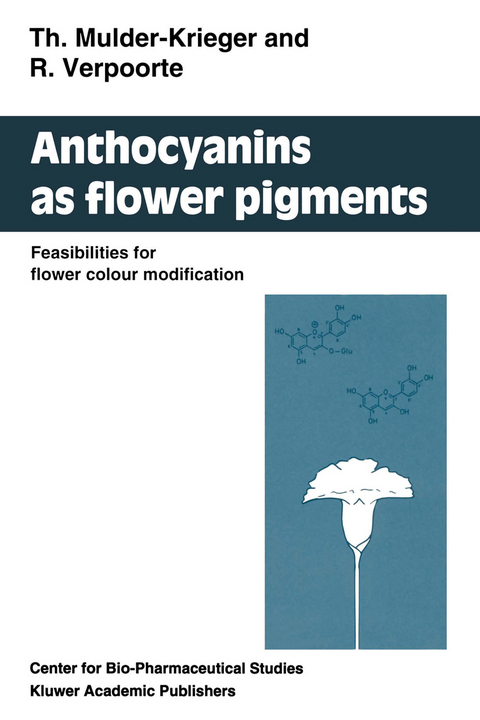
Anthocyanins as Flower Pigments
Springer (Verlag)
978-0-7923-2465-2 (ISBN)
I Plant Pigments.- I.1 General introduction.- I.2 Various flavonoid classes.- I.3 Chemistry of anthocyani(di)ns.- II Methods to Change Characteristics of Plants.- II.1 General introduction.- II.2 Classical breeding.- II.3 Mutagenesis.- II.4 Fusion of protoplasts.- II.5 Recombinant DNA technology/genetic engineering.- III Biosynthesis of the Various Flavonoid Classes.- III.1 General introduction.- III.2 Origin of flavonoid precursors.- III.3 Enzymology of the general phenylpropanoid metabolism.- III.4 Formation of the various flavonoid classes.- III.5 Reactions leading to modifications of flavonoids.- III.6 Regulation of the flavonoid biosynthesis.- III.7 Biosynthesis site.- IV Genes Controlling Flavonoid Biosynthesis.- IV.1 General introduction.- IV.2 Genes controlling flavonoid biosynthesis in flowers of various plants.- IV.3 Cloned genes involved in the biosynthesis of flavonoids.- V Flower Colour.- V.l General introduction.- V.2 Contribution of flavonoids (especially anthocyanins) to flower colours.- V.3 Flower industry in the Netherlands.- VI Modification of Flower Colour.- VI.1 General introduction.- VI.2 Modification by classical methods.- VI.3 Modification by recombinant DNA techniques.- VII Summary and Conclusions.- VII.1 Plant pigments.- VII.2 Methods to change characteristics of plants.- VII.3 Biosynthesis of the various flavonoid classes.- VII.4 Genes controlling flavonoid biosynthesis.- VII.5 Flower colour.- VII.6 Modification of flower colour.- VII.7 Conclusions.- VIII References.
| Erscheint lt. Verlag | 31.1.1994 |
|---|---|
| Zusatzinfo | 2 Illustrations, black and white; 164 p. 2 illus. |
| Verlagsort | Dordrecht |
| Sprache | englisch |
| Maße | 155 x 235 mm |
| Themenwelt | Naturwissenschaften ► Biologie ► Biochemie |
| Naturwissenschaften ► Biologie ► Botanik | |
| Naturwissenschaften ► Biologie ► Zellbiologie | |
| Naturwissenschaften ► Chemie ► Organische Chemie | |
| ISBN-10 | 0-7923-2465-X / 079232465X |
| ISBN-13 | 978-0-7923-2465-2 / 9780792324652 |
| Zustand | Neuware |
| Informationen gemäß Produktsicherheitsverordnung (GPSR) | |
| Haben Sie eine Frage zum Produkt? |
aus dem Bereich


